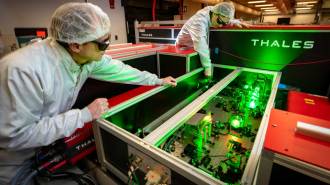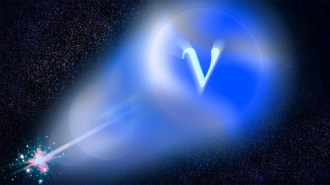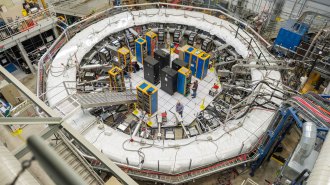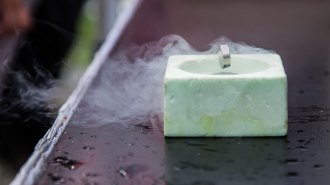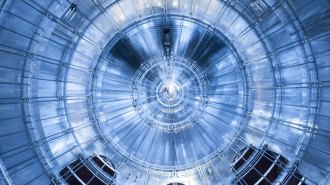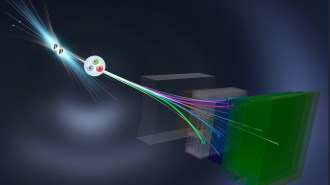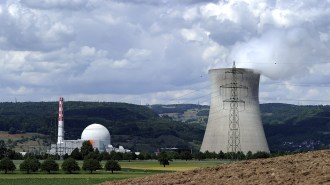Normally aloof particles of light seen ricocheting off each other
LHC experiment is first direct evidence of photon-on-photon scattering
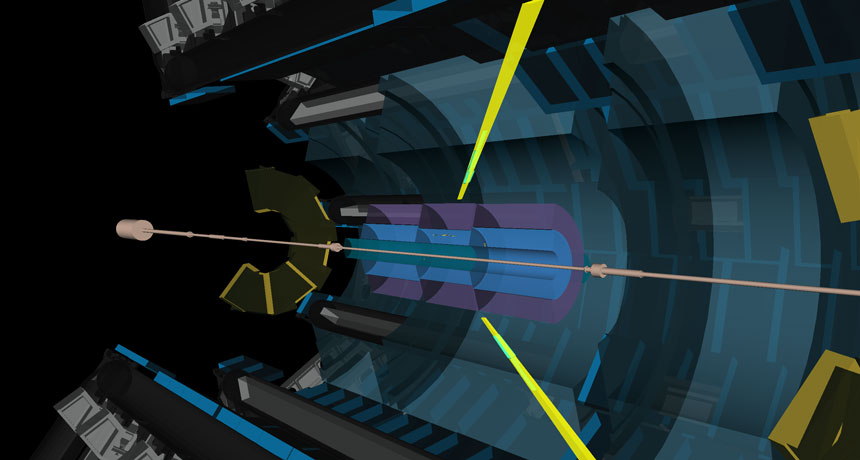
TRAVELING LIGHT Particles of light can scatter off one another, a new study suggests. Researchers from the ATLAS experiment (illustrated) at the Large Hadron Collider detected events in which two photons (yellow beams) bounced off each other in collisions of lead nuclei.
ATLAS Experiment © 2017 CERN
